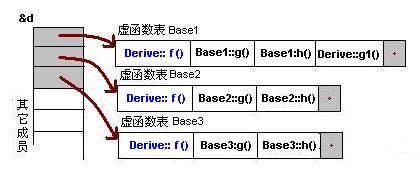基本思想:
最小生成树问题的概念—普里姆算法是从点的角度来解决。若在解决问题过程中需要遍历图的所有点,则普里姆算法更好。
普里姆算法更像构建一棵树。联想我们构建二叉树的过程,从根节点出发,构建左右子树,再以左右子树为根节点,构建它们的左右子树。普里姆算法设一个点集V,初始时只有源点,从点集的点出发遍历所有以它们为起点的边,找到其中权值最小的边,且这条边的终点不在点集V中,然后将终点加入点集,再从点集V中的所有点出发,找一条权重最小的边。从点集中的点向外发散,构建起最小生成树。



该算法事件关键步骤数为
(n+n^2)*n/2 n为图中的结点数量
事件复杂度为O(n^3)
#include<stdio.h>
#include<stdlib.h>
#define MaxVertices 100
#define MaxNum 100
#define TRUE 1
#define FALSE 0
typedef struct graph {
int NoEdge;
int Vertices;
int** A;
}Graph;
void CreateGraph(Graph* g, int n, int noedge) {
int i, j;
g->NoEdge = noedge;
g->Vertices = n;
g->A = (int**)malloc(n * sizeof(int*));
for (i = 0; i < n; i++) {
g->A[i] = (int*)malloc(n * sizeof(sizeof(int)));
for (j = 0; j < n; j++) {
g->A[i][j] = noedge;
}
g->A[i][i] = 0;
}
}
void Add(Graph* g, int u, int v, int w) {
if (u < 0 || v < 0 || u > g->Vertices - 1 || v>g->Vertices - 1 || u == v || g->A[u][v] != g->NoEdge) {
printf("BadInput\n");
}
else {
g->A[u][v] = w;
}
}
void Delete(Graph* g, int u, int v) {
if (u < 0 || v < 0 || u > g->Vertices - 1 || v>g->Vertices - 1 || u == v || g->A[u][v] == g->NoEdge) {
printf("BadInput\n");
}
else {
g->A[u][v] = g->NoEdge;
printf("Delete Successfully\n");
}
}
void Exist(Graph* g, int u, int v) {
if (u < 0 || v < 0 || u > g->Vertices - 1 || v>g->Vertices - 1 || u == v || g->A[u][v] == g->NoEdge) {
printf("No Existance\n");
}
else {
printf("Element Exists!\n");
}
}
void Prim(Graph* g) {
int i,b, c, v,
n = g->Vertices, count = -1,
* gatheredTreeNodes,
tempEnd, tempStart, tempMinW,
* currentMinCostList, * currentEndList, * currentStartList,
* endNodesList , * minCostList, * startNodesList, stopWhile;
int mark[MaxVertices];
endNodesList = (int*)malloc(n * sizeof(int));
minCostList = (int*)malloc(n * sizeof(int));
startNodesList = (int*)malloc(n * sizeof(int));
gatheredTreeNodes = (int*)malloc(n * sizeof(int));
currentMinCostList = (int*)malloc(n * sizeof(int));
currentEndList = (int*)malloc(n * sizeof(int));
currentStartList = (int*)malloc(n * sizeof(int));
for (i = 0; i < n; i++) {
startNodesList[i] = -1;
endNodesList[i] = -1;
mark[i] = FALSE;
minCostList[i] = MaxNum;
}
mark[0] = TRUE;
minCostList[0] = 0; endNodesList[0] = 0; startNodesList[0] = 0;
count++;
gatheredTreeNodes[count] = 0;
while (1) {
stopWhile = TRUE;
for (i = 0; i < n; i++)
{
if (mark[i] == FALSE)
{
stopWhile = FALSE;
}
}
if (stopWhile == TRUE) {
break;
}
tempMinW = 10000;
for (c = 0; c <= count; c++) {
for (v = 0; v < n; v++) {
if (g->A[gatheredTreeNodes[c]][v] != 0
&& g->A[gatheredTreeNodes[c]][v] != g->NoEdge
&& mark[v] == FALSE) {
if (g->A[gatheredTreeNodes[c]][v] < tempMinW)
{
tempMinW = g->A[gatheredTreeNodes[c]][v];
tempEnd = v;
tempStart = gatheredTreeNodes[c];
}
}
}
if (tempMinW != 10000) {
currentMinCostList[c] = tempMinW;
currentEndList[c] = tempEnd;
currentStartList[c] = tempStart;
tempMinW = 10000;
}
else {
currentMinCostList[c] = tempMinW;
}
}
tempMinW = currentMinCostList[0];
tempEnd = currentEndList[0];
tempStart = currentStartList[0];
for (c = 0; c <= count; c++) {
if (currentMinCostList[c] < tempMinW) {
tempMinW = currentMinCostList[c];
tempEnd = currentEndList[c];
tempStart = currentStartList[c];
}
}
if (tempMinW == 10000) {
break;
}
endNodesList[tempEnd] = tempEnd;
minCostList[tempEnd] = tempMinW;
startNodesList[tempEnd] = tempStart;
count++;
gatheredTreeNodes[count] = tempEnd;
mark[tempEnd] = TRUE;
}
for (b = 1; b < n; b++) {
printf("%-6d %-6d%-6d\n", startNodesList[b], minCostList[b], endNodesList[b]);
}
}
void PrintMatrix(Graph* g) {
int i, j;
for (i = 0; i < g->Vertices; i++) {
for (j = 0; j < g->Vertices; j++) {
printf("%-4d", g->A[i][j]);
}
printf("\n");
}
printf("***************\n");
}
void main() {
Graph* g;
g = (Graph*)malloc(sizeof(Graph));
CreateGraph(g, 6, -1);
PrintMatrix(g);
/*Add(g, 0, 2, 7);
Add(g, 0, 4, 7);
Add(g, 1, 2, 5);
Add(g, 1, 5, 6);
Add(g, 2, 0, 7);
Add(g, 2, 1, 5);
Add(g, 2, 3, 1);
Add(g, 2, 5, 2);
Add(g, 3, 2, 1);
Add(g, 3, 5, 2);
Add(g, 4, 0, 9);
Add(g, 4, 5, 1);
Add(g, 5, 1, 6);
Add(g, 5, 2, 2);
Add(g, 5, 3, 2);
Add(g, 5, 4, 1);*/
//Delete(g, 1, 0);
Add(g, 0, 3, 5);
Add(g, 0, 2, 1);
Add(g, 0, 1, 6);
Add(g, 1, 4, 3);
Add(g, 1, 2, 5);
Add(g, 1, 0, 6);
Add(g, 2, 4, 6);
Add(g, 2, 3, 5);
Add(g, 2, 1, 5);
Add(g, 2, 5, 4);
Add(g, 2, 0, 1);
Add(g, 3, 2, 5);
Add(g, 3, 0, 5);
Add(g, 3, 5, 2);
Add(g, 4, 5, 6);
Add(g, 4, 2, 6);
Add(g, 4, 1, 3);
Add(g, 5, 4, 6);
Add(g, 5, 2, 4);
Add(g, 5, 3, 2);
PrintMatrix(g);
Prim(g);
}
0 -1 -1 -1 -1 -1
-1 0 -1 -1 -1 -1
-1 -1 0 -1 -1 -1
-1 -1 -1 0 -1 -1
-1 -1 -1 -1 0 -1
-1 -1 -1 -1 -1 0
0 6 1 5 -1 -1
6 0 5 -1 3 -1
1 5 0 5 6 4
5 -1 5 0 -1 2
-1 3 6 -1 0 6
-1 -1 4 2 6 0
2 5 1
0 1 2
5 2 3
1 3 4
2 4 5
C:\C程序&C语言数据结构\C语言数据结构_从入门到入坑\10\邻接矩阵实现Prim算法\Debug\邻接矩阵实现Prim算法.exe (进程 9000)已退出,代码为 0。
要在调试停止时自动关闭控制台,请启用“工具”->“选项”->“调试”->“调试停止时自动关闭控制台”。
按任意键关闭此窗口. . .




